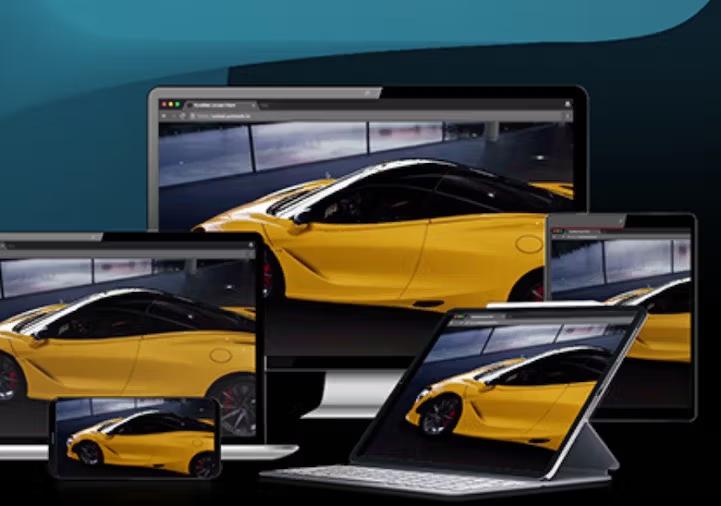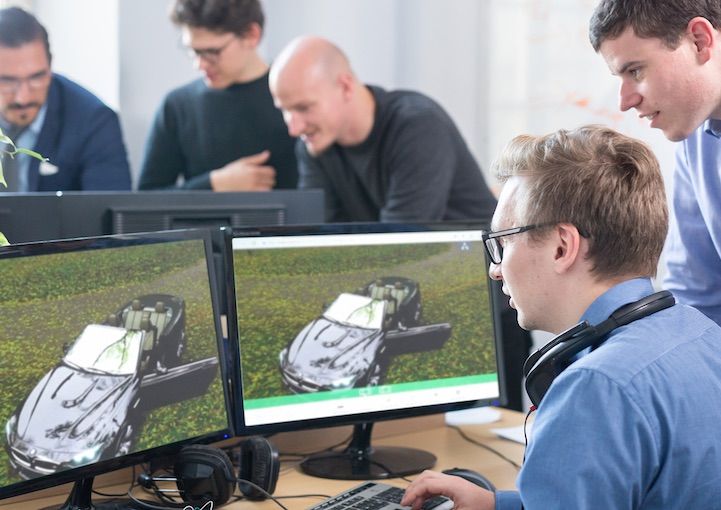INSTANT ON NOW AVAILABLE - Experience Time to first frame as quick as 2 SECONDS
Your Top Online Resources for Creating Real-Time 3D Content with Unity and Unreal

Imagine the unspeakable horror of creating documents using only HTML. Instead of a formatting bar or handy shortcut key combos, your workday would be an 8-hour nightmare of angle brackets, every paragraph bookended with a <p> and </p>, every item in a numbered list choked by a <ul> and </ul>.
For some time, this kind of manual-intensive work defined the world of 3D content creation. That is until companies like Unity and Unreal realized time is money and invested energy into developing powerful game engines, analogous to beloved word processors.
Since their inception, game engines have revolutionized 3D design. As Electronic Arts told the Wall Street Journal in 2016, when they revamped their FIFA 17 game with new and improved features they simply “borrowed” from a completely unrelated game involving dragons rather than lifting and shifting the code. Otherwise, their executive vice president reported, it “would’ve taken us three times the effort” to complete.
Much like military technology filters its way into other industries (think microwaves and duct tape), 3D technology is travelling into various sectors. Engineers, architects, construction firms, automakers, and more can create real-time 3D content using Unity and Unreal Engine. To sweeten the deal, there’s a treasure trove of online resources available to help them get started.
Read Next: Deploying real-time 3D: WebGL or cloud rendering
The internet is your game engine university
Both Unity and Unreal understand that not everyone using their engines comes from a programming background. Moreover, they understand that people using game engines for industrial purposes are results-oriented and have tight project deadlines. Consequently, these users can’t climb a steep learning curve at their leisure.
To address this need, both Unity and Unreal have developed comprehensive online training academies for their users.
Unity Learn
Curated to meet the needs of novices and professionals alike, the Unity Learn portal includes introductory tutorials like “Using the Unity Interface” and “Essential Unity Concepts”. There are also feature-specific tutorials such as “Introduction to Lighting and Rendering” and “Creating Believable Visuals” for industrial users whose needs lean heavily towards design and aesthetics.
In fact, while many of the tutorials on Unity Learn are geared towards game designers, they also help individuals from other industries apply the game engine’s incredible 3D design capabilities to projects such as creating a walkthrough for an architectural design project or mocking up features for a carmaker’s new models.
Unity Learn also offers full-length courses for individuals who seek a detailed understanding of specific topics.
Unreal Online Learning
Unreal Online Learning is a prime example of how brands should build their knowledge centers. Getting started is straightforward thanks to curated learning paths geared towards an Unreal Engine learner’s unique needs. For instance, the company offers three main learning paths:
- Getting Started in Unreal Engine
- Exploring Blueprints
- Becoming an Architectural Visualizer
Users can browse for courses taught by industry experts and filter their searches by topic, author, or industry. Moreover, learning profiles and gamification provide an overall framework for the learning process, facilitating the acquisition of new skills. In fact, when Unreal Engine announced the launch of its learning center last summer, it specifically highlighted the introduction of industry-specific tracks:
- Game Development
- Architecture
- Industrial Design
- Media and Entertainment
Robust forums that support users
The purpose of these game engines is to help game developers and 3D designers avoid reinventing the wheel and focus on what their main objective is, whether that objective is to create the next Grand Theft Auto or provide a photorealistic 3D model of a proposed condominium development. Passionate users within the Unity Forum and the Unreal Forum help community users who seek detailed answers or instructions for specific problems.
Strategic partnerships allow users to easily upload CAD data into game engines
Preparing CAD files for assembly in a game engine is a tedious task. It’s one of the reasons professionals in fields like engineering and architecture previously balked at the thought of using game engines. Fortunately, both Unreal Engine and Unity have entered into strategic partnerships to deliver a simplified CAD-to-engine workflow.
Unreal Engine users and Unity users use Datasmith and PiXYZ respectively to import several popular CAD file types, particularly those used by companies like SOLIDWORKS and Rhino, while retaining key features. For instance, Unreal’s Datasmith eliminates the need for a car manufacturer to break up a CAD design and upload these component parts individually into the game engine.
Case in point: A designer importing the model of a motorbike below can import a model adapted to match Unreal’s capabilities and keep the model’s hierarchy and metadata. Using Datasmith, the overall timeline is cut down by a matter of weeks or days.
Unreal and Unity continually deliver solutions for gaming and non-gaming industry users alike
Unreal and Unity’s teams keep their eyes peeled for friction points between their game engines and industrial users. While a passionate game designer may have incentive to deal with labor-intensive workflows, a professional managing a large project doesn’t have that same luxury. The following are a few of the features these engines have introduced to elevate the user experience.
Substance from Allegorithmic plugin
Unreal Engine supports a Substance plugin. Substance, the 3D texturing suite by Allegorithmic (a subsidiary of Adobe), allows users to access a rich library of PBR-ready materials. In other words, designers benefit from a simplified workflow for changing materials and textures within their designs in real time. Naturally, this is a useful feature, particularly for Unreal users in the architecture design space.
Blueprint Visual Scripting language for customization
Unreal users who come from a non-programming background can use the Blueprint Visual Scripting system to create original designs. It’s a visual, node-based system that allows users to program without actually writing lines of code. Simply put, nodes are connected in order to achieve specific functionalities, as demonstrated in this video, Intro to Blueprints. That said, those who prefer traditional programming can do so using C++ in Unreal.
Automotive Materials asset pack
The auto industry is particularly interested in the use of photorealistic 3D rendering for both manufacturing and marketing. As a result, companies like Unreal are interested in the auto industry, too. Unreal offers an Automotive Materials asset pack that provides an entire library of automotive PBR materials and textures.
Architecture, Engineering, and Construction bundle
Unity has created a bundle of its product specifically geared towards enterprise users in the architecture, engineering, and construction (AEC) industries. This bundle makes it easy for AEC users to turn their models into real-time renderings for collaboration, marketing, or interactive client walkthroughs.
Cloud-based sharing and collaboration with PureWeb
Related Read: These are the trends powering CAD application and collaboration
Once you’ve created your renderings, it’s time to share them, either internally with clients or externally with the public. In the past, this required dedicated workstations packing the hardware to manage these files. Presently, cloud-based streaming solutions like PureWeb’s Reality allows creators to share renderings without worrying about whether the end user has the GPU necessary to view the file. See for yourself how PureWeb's Reality can bring your Unity and Unreal projects to life by requesting a demo. Moreover, PureWeb’s platform only shares the rendered image, not the source files, protecting valuable proprietary data.


